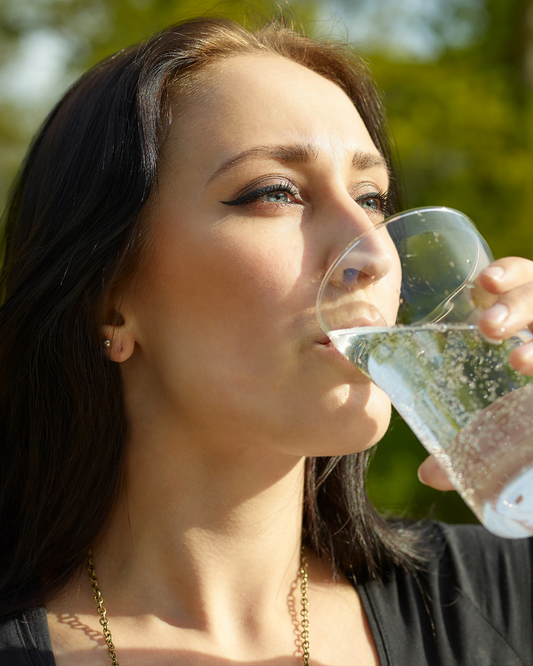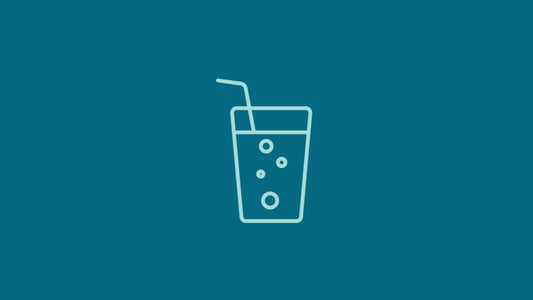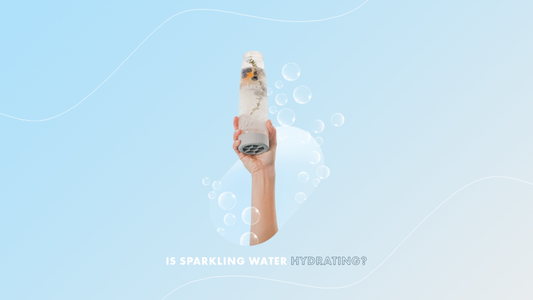
Sparkling water, bubbly water, fizzy water, water with gas, carbonated water, seltzer. Whatever you choose to call it, the global sparkling water craze is only just beginning! But what exactly is sparkling water?
Well? What Is It?!
Whichever way you choose to consume your fizzy libations, sparkling water is sure to have a positively bubbly future!
Simply put, sparkling water is water with carbon dioxide gas dissolved in it using pressure. It does not contain deliberately added salt, potassium or other minerals – above what naturally occurs in all water sources. Club soda, soda water and sparkling mineral waters can contain additional dissolved minerals including sodium, calcium, chlorides, bicarbonates, fluoride, magnesium, potassium and sulfates, sometimes in sufficient quantities to be noticeable by taste.
Now that we know more about sparkling water, let's go back to its invention!
When was sparkling water invented?
What if we told you that sparkling water is a modern hype, but it is certainly not new to scientists. Some will tell you that carbonation was done by people in medieval times, or that it began as a way for people to preserve foods: the one thing we know is that carbonation is not new. Although no one knows for sure when carbonation was invented, many believe it was in 1767.
The beginnings of carbonated drinks
The process of carbonation was commercialized in 1786 in Switzerland, but really it was discovered years before that. In fact, carbonated drinks were invented in 1767 by an interesting English chemist and inventor!

Who invented sparkling water?
The process of carbonating water was invented in England in 1767 by a man named Joseph Priestley. Priestley, credited with the discovery of oxygen, was a scientific pioneer that was particularly into gasses. As the first person to ever taste sparkling water (or seltzer water), Joseph said he felt a, “peculiar satisfaction”, when drinking it.
Joseph Priestley - An English scientist with great taste!
Carbonated water - Discovered By Priestley, Not Elvis!
The first documented creation of sparkling water is credited to Joseph Priestley in 1767 in Leeds. Priestly discovered a safe way to trap carbon dioxide underneath water by suspending a bowl of water over a beer vat. He then dripped sulphuric acid into the vat and discovered that this technique infused the water with carbon dioxide.
Ever wonder what early life was like in the city of Leeds? Apparently, it had a lot of weird and unexpected experiments for people to perform, as well as a lot of carbonated beverages.
How did the early carbonation process work exactly?
The history of sparkling water started like many other things: by accident!
Priestley’s first creation of sparkling water was purely by accident. He suspended a container of water above a brewer’s vat during fermentation in the process of other experiments. The CO2 produced during fermentation at least partially carbonated the water in the container. And Priestly loved it!
Based on his positive assessment of the sparkling water, Priestley published a paper in 1772 “Impregnating Water with Fixed Air” and created an apparatus to do it deliberately. A multitude of contraptions also followed to do this commercially. Unfortunately, Priestley did not experience financial success from his invention of bubbly drinks.
Learn more about the science of carbonation

How did sparkling water change from 1786 to today?
By the early-to-mid 20th century, water carbonation devices had grown in sophistication and shrunk in size to be manually operated by hand as soda siphons or seltzer bottles. They were found in bars and affluent homes to offer refreshing, luxurious fizzy drinks to guests and family. Soda siphons/seltzer bottles were delivered pressurized in very thick glass bottles and were often covered in thick mesh wire: the pressure on the glass bottles was important and they could explode.
When was the first house sparkling water machine invented?
The first machine for producing sparkling water at home was sold in 1955. This machine became very popular in the UK in the 1970s with the jingle “Get Jizzy with the Fizzy!”. The SodaStream machine operated (and still operates) using a pressurized CO2 tank. The successor of that machine operates using the same CO2 tank pressure principles. In 2018, PepsiCo acquired Sodastream in a deal valued at $3.2 billion.
Let’s Face It, Bubbles Are In
Today, with an increased focus on health and natural ingredients, the popularity of sparkling water has exploded from a niche, affluent beverage to be broadly consumed and mass-marketed. While traditional soda and soft drinks are still marketedtaples, many consumers are switching to sugar-free and calorie-free sparkling water, making it one of the fastest growing categories in the entire beverage industry!
Many brands have grown including traditional sparkling waters like Perrier, San Pellegrino and Badoit and new flavoured ‘essence’ sparkling waters like La Croix (owned by National Beverage Corp), Aha! (owned by Coca-Cola) and Bubly (owned by Pepsico).
The New Kid On The Block - Spärkel
With time comes new innovation. Spärkel was conceptualized in 2017 by a team that believes that a good life starts with good food. Being disappointed by the limited options of at-home water carbonation devices, which rely on CO2 tanks, artificial flavours and carbonated water as a base, Spärkel saw an opportunity to bring new innovation to the kitchen: Spärkel.
With this in mind, we created an alternative that uses real ingredients without the use of a CO2 tank – making it easy to use with the ability to be shipped directly to your door!
Discover the Spärkel beverage system

What you should remember about the history of sparkling water
Carbonated water has been around for thousands of years; it's simply a mixture of carbonic acid gas and water. And ever since its appearance, carbonated water has been in and out of fashion several times, mostly because of the changing tastes of people around the world.
During times where social drinking was more acceptable, soda water was very common because it enabled users to enjoy many types of cocktails based on alcohol diluted in carbonated water. After a period of unpopularity in the 70s, soda drinks of all types resurfaced in 80s and 90s, becoming commonplace today in the 21st century no matter where you look.




